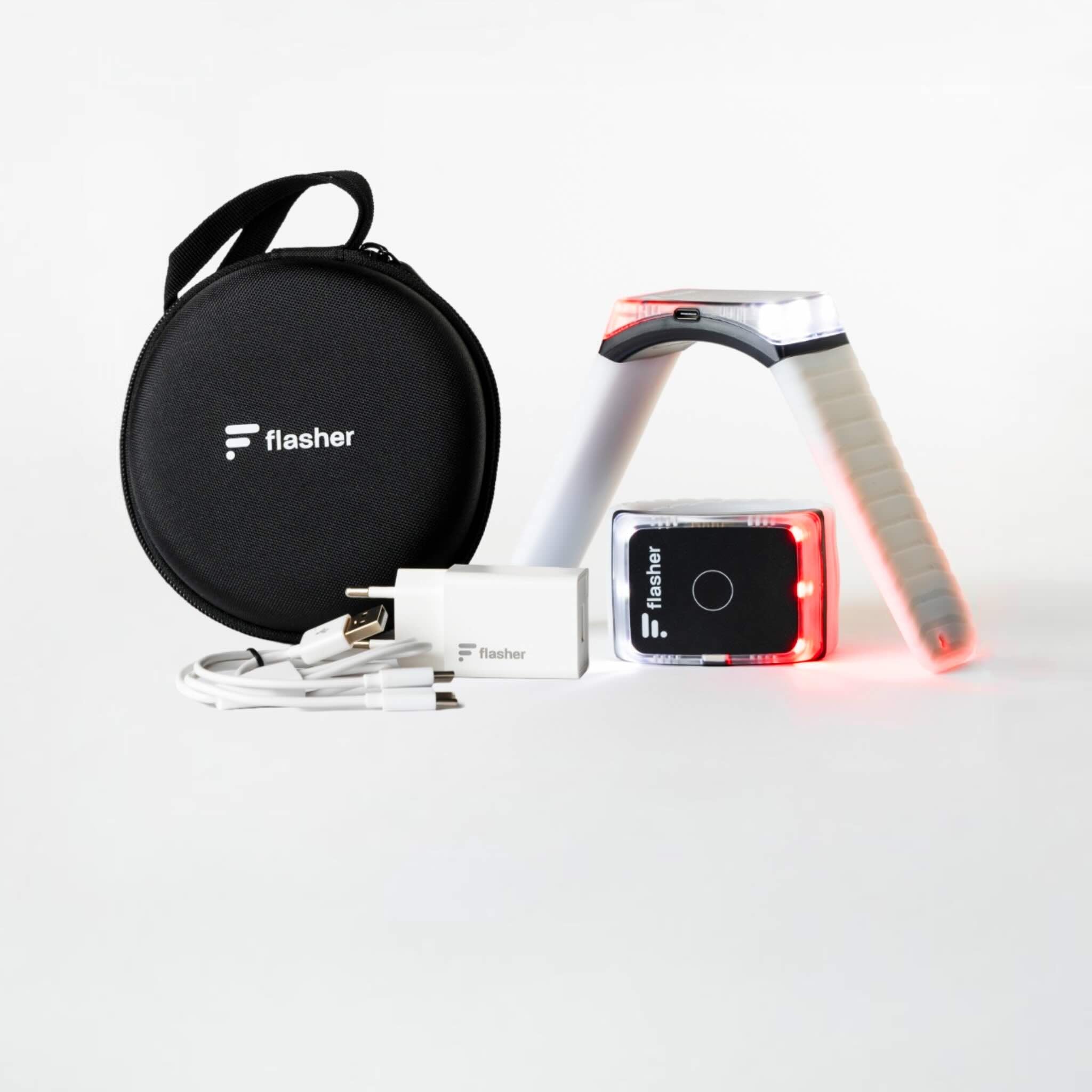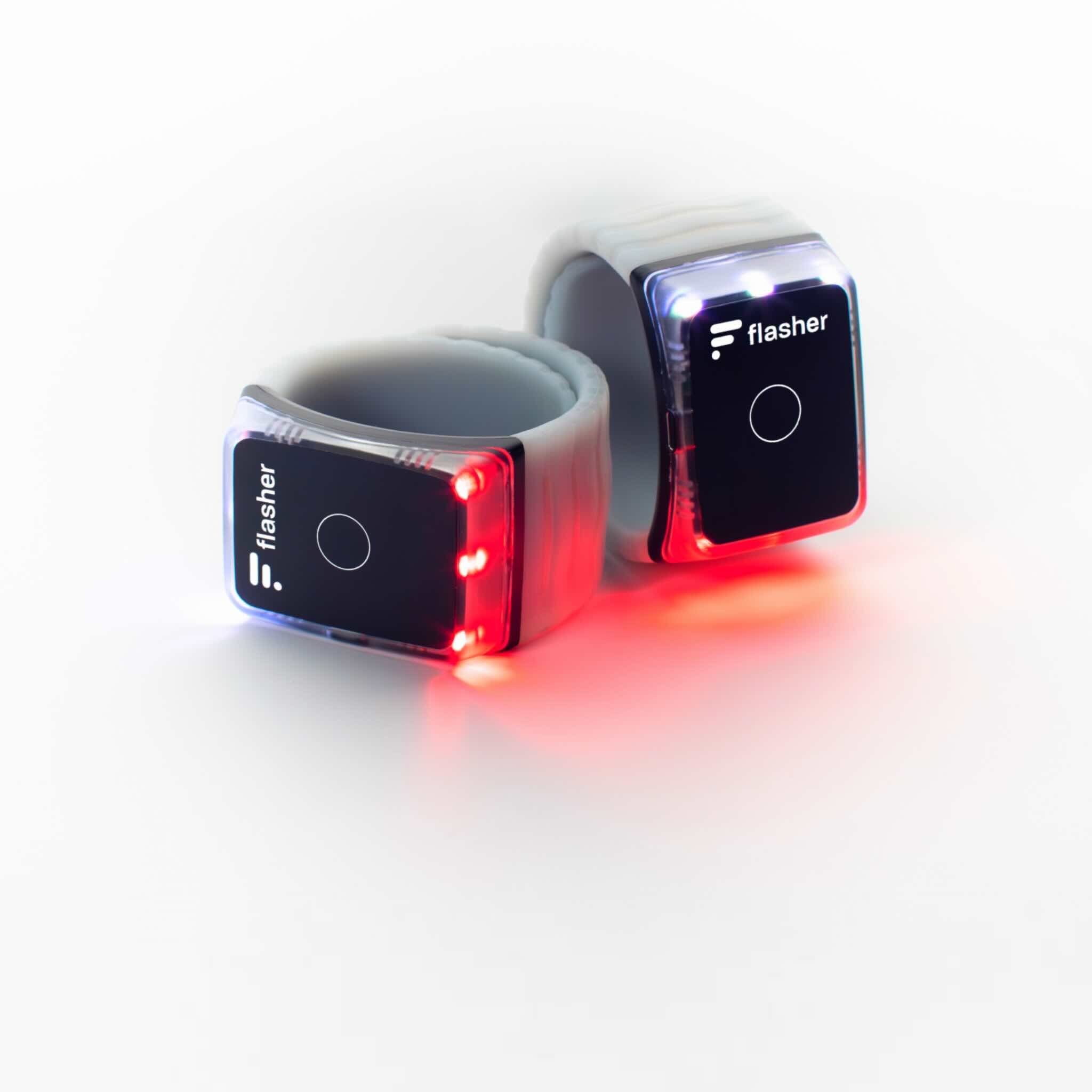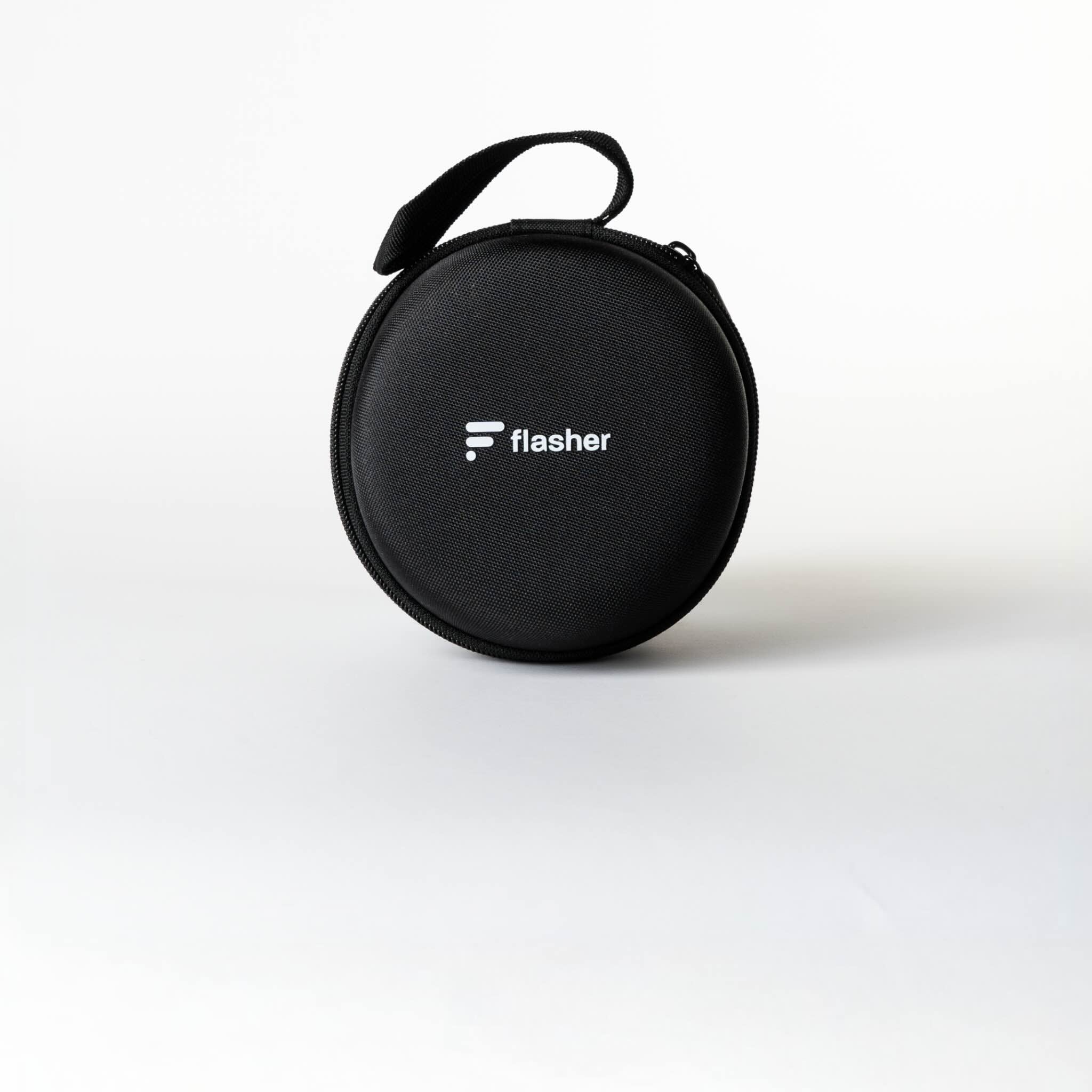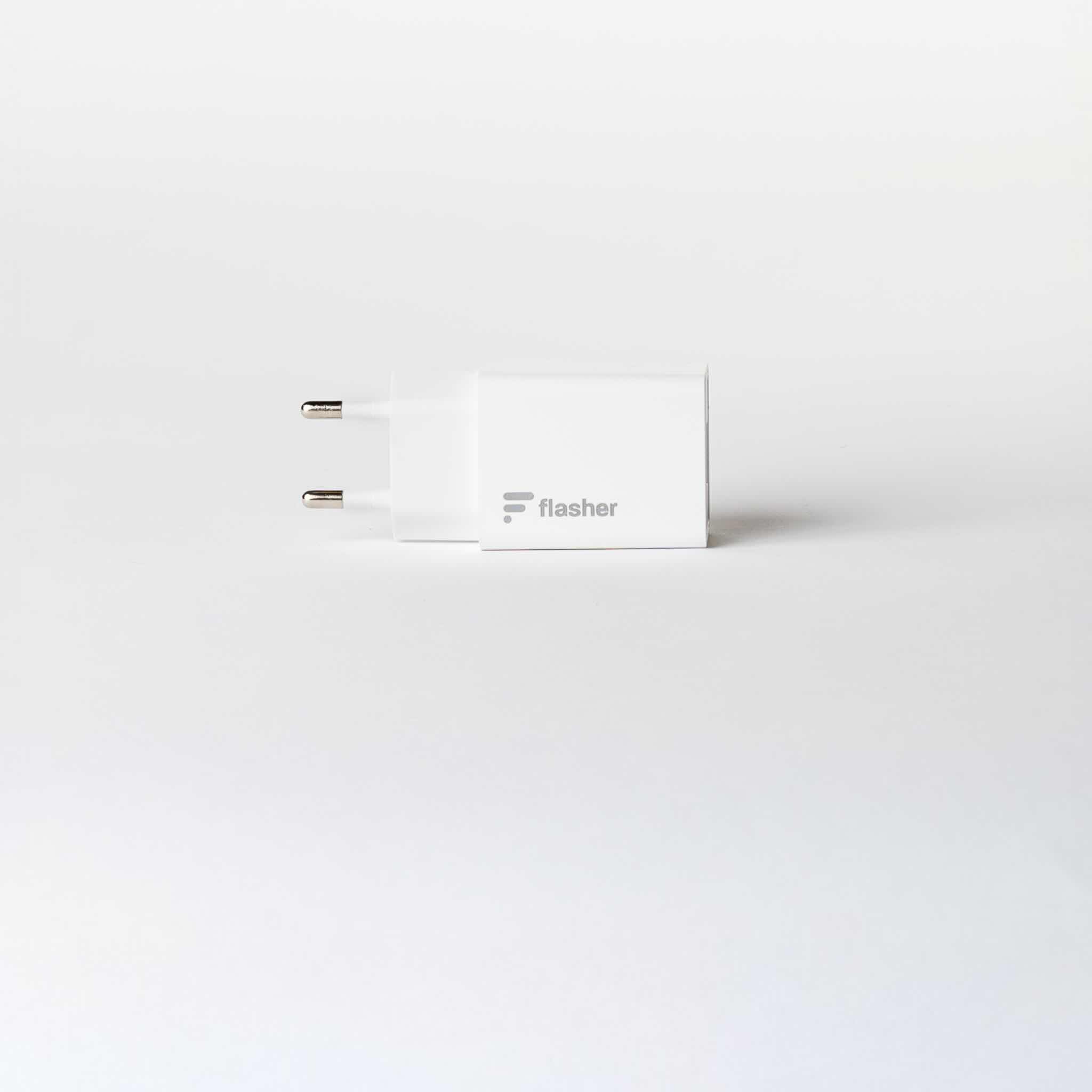The roadworthy bicycle
It's easy to get a bike, but can you get started straight away and take part in traffic without any preparation? What regulations are there for tires, indicators , lights, etc.? In this article, you'll find out everything you need to know to make your bike roadworthy.
When is a bicycle considered roadworthy?
A bicycle or e-scooter is considered roadworthy if it has the minimum equipment required by law . This is usually a bell or horn, brakes, reflectors and lights.
How do I make my bike roadworthy in Germany?
A bicycle is roadworthy in Germany if it
- at least one bright-sounding bell,
- two independent brakes,
- one or two forward-facing, non-flashing headlights for white dipped beam,
- at least one white reflector facing forward,
- at least one tail lamp for red light,
- at least one large non-triangular retro-reflector,
- an alternator , a battery or a rechargeable energy storage device for operating the headlight and tail light,
- yellow reflectors on the pedals, facing forwards and backwards,
- and either a continuous white reflector ring on the tire, rim or in the spokes or completely white reflecting spokes or spoke sleeves or two side-acting, reflective yellow reflectors on each wheel
has.
In addition, lighting such as Flasher's bracelets can increase visibility on bicycles and e-scooters and can be used as StVZO-compliant indicators for greater stability.
What equipment does my bike need to be considered roadworthy in Austria?
In Austria, the law stipulates a number of minimum equipment requirements. A bicycle is considered roadworthy if it is equipped with
- two independently acting braking devices ,
- a device for emitting acoustic warning signals (i.e. bell, horn, ratchet, whistle),
- at least one white, forward-facing reflector (minimum area 20 cm2),
- at least one red, rear-facing reflector (minimum area 20 cm2),
- yellow reflectors on the pedals or a comparable alternative,
- and either white or yellow reflective tyres arranged in a ring or with reflectors on each wheel working on both sides (minimum area 20 cm2)
- a separate pair of pedals or support devices, a separate holding device and a separate seat per person
is equipped with.
The following equipment is extremely important for safety and may only be omitted in daylight and good visibility:
- a bright headlight, firmly attached to the bicycle, which illuminates the road ahead with white or light yellow, stationary light with a luminous intensity of at least 100 cd and
- a red rear light with a luminous intensity of at least 1 cd. This may flash and does not have to be attached to the bicycle.
For multi-track bicycles, two reflectors at the front and two at the rear must indicate the width of the vehicle, the brakes must act on all wheels on an axle simultaneously and not every person being transported needs their own pedals and handles.
Racing bicycles may be used in daylight and when visibility is good if they are only equipped with two independently operating braking devices.
Direction indicators are permitted, which means that flashers can also be used. We explain why this is the case here: Using flashers on bicycles and e-scooters
Equipment for a roadworthy bicycle in Switzerland
The list of equipment that is mandatory for bicycles in Switzerland is comparatively shorter. It includes
- suitable, intact pneumatic tires or other elastic tires ,
- two powerful brakes that act separately on the front and rear tires (on multi-track bikes on the respective wheels of one axle simultaneously),
- sufficiently strong frame, handlebars and forks,
- at least one white reflector facing forward (at least 10 cm2 in size),
- at least one rear-facing red reflector (at least 10 cm2 in size),
- Orange reflectors on the pedals facing forward and backward
In addition to this equipment, a bicycle needs protection from dusk until daylight, as well as in poor visibility and in tunnels.
- at least one stationary light shining white to the front (removable or attached) and
- At least one stationary light shining red to the rear (fixed or removable).
Swiss law also specifically allows the use of direction indicators such as flashers on bicycles .
No bell and not even a saddle are necessary for road safety.

How do I get my bike back in shape?
So when you check your vehicle for roadworthiness, make sure the brakes, reflectors, lights and bell are all present.
In addition, there are things you should consider to ensure that you have not only a roadworthy vehicle, but one that is as long-lasting and roadworthy as possible. You need to check that everything that is supposed to move is moving and that everything that is not supposed to move is rigid.
Absolutely necessary checkpoints:
- Observe mandatory equipment
- Check brakes
- Check bicycle chain
- Check tires
- Check lighting
Additional points for durable bikes:
- Basic cleaning of the bike
- Adjust circuit
- Tighten screw connections
- Lubricate moving parts
- For e-bikes: charge the battery
Here you can find the measures in detail:
- The brakes are mandatory equipment and must be checked for wear and function. If necessary, the brake can be adjusted on the handlebars or the tire so that it pulls firmly again. However, this should not compensate for wear on the brake shoes.
- Check the bicycle chain . The bicycle chain is obviously extremely important and must withstand great force at the same time. Rust can damage the structure, dirt can accelerate wear. Clean the chain and gears of debris and old oil using a brush and a rag. After cleaning, lubricate the chain with chain oil. Make sure that the chain oil does not drip onto the floor or the rest of the bike and that you - after waiting about 10 minutes - wipe any excess oil from the chain.
- Check the tires . Visually inspect the tire casing for damage and wear. Pump intact tires up to the recommended tire pressure indicated on the tire casing. If the air pressure escapes too quickly, your air hose may be damaged. If you followed our tip and let some air out of the tires for the winter to give you more grip on slippery roads, you can now fill the tires up again. This saves energy and wear when the road surface has better grip anyway.
- In spring, when it gets dark earlier, and also in summer, when you're out late at night, lighting is essential. Make sure that the headlights and reflectors (front, rear, on the pedals and spokes) are not dirty and that the power supply is working. You can also use additional lighting on your bike or e-scooter, such as direction indicators. In the future, indicators may also be attached directly to the bike, which will increase maintenance costs. If you use indicators such as flashers or helmets, check the charge level. With helmets, also make sure that the foam is still intact.
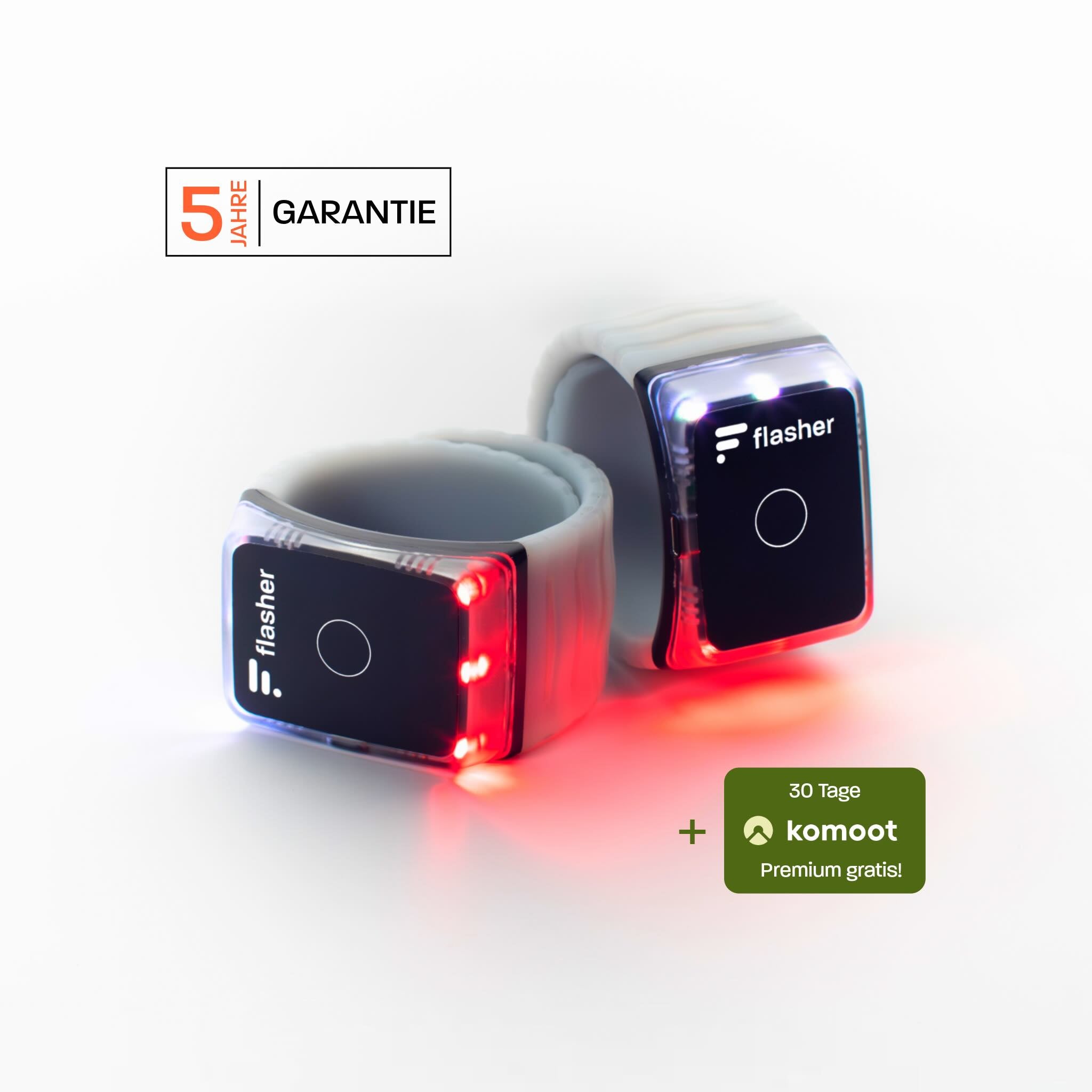
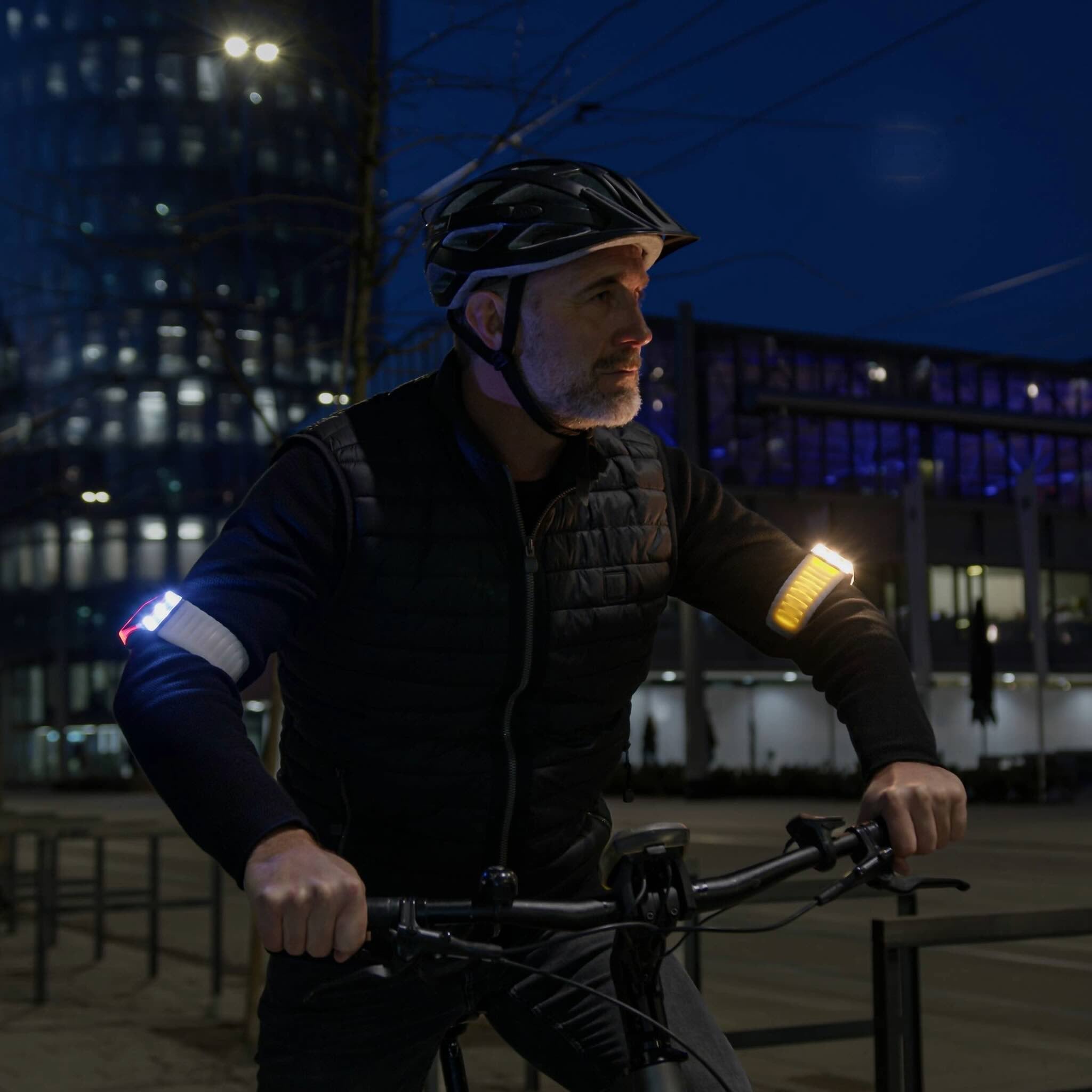
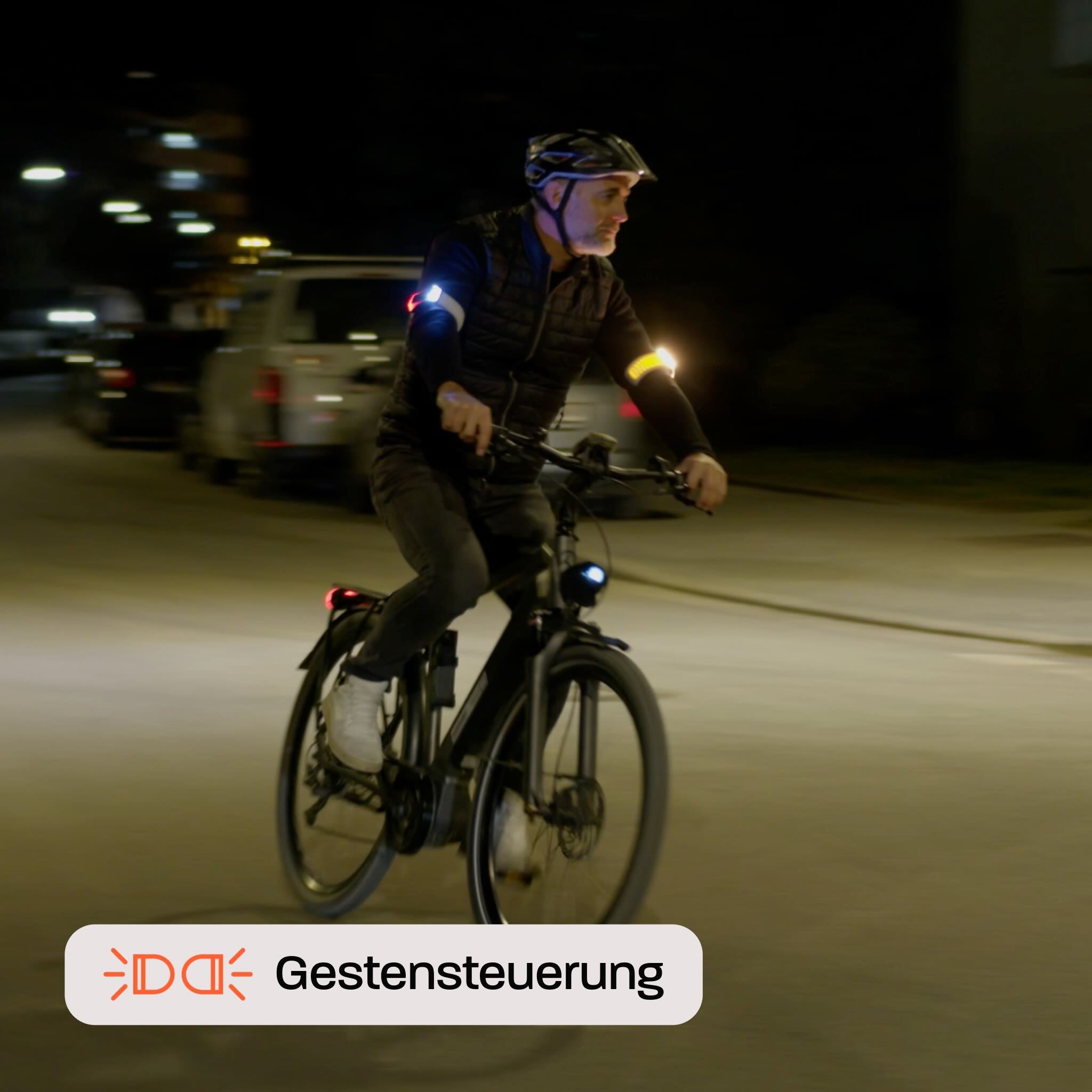
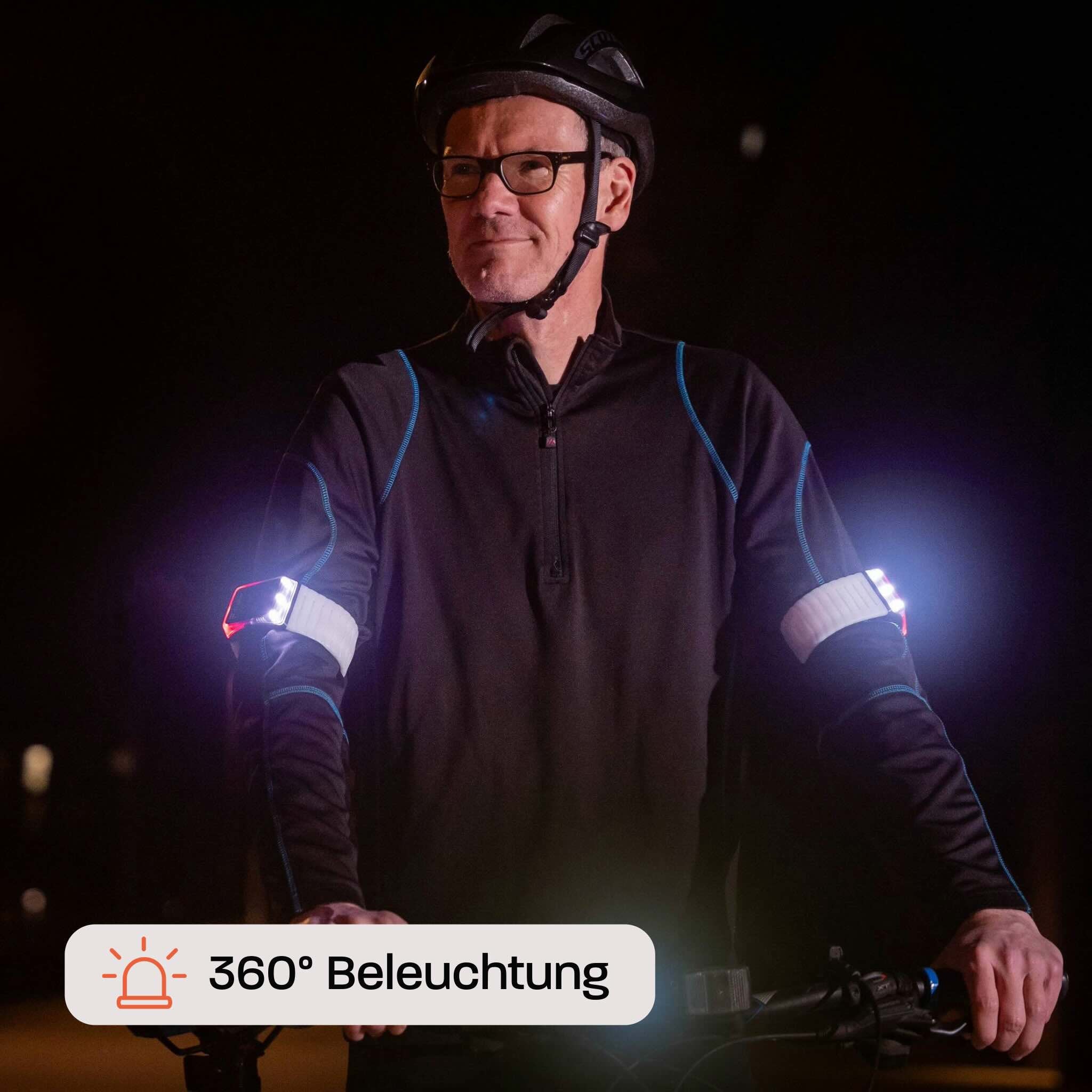
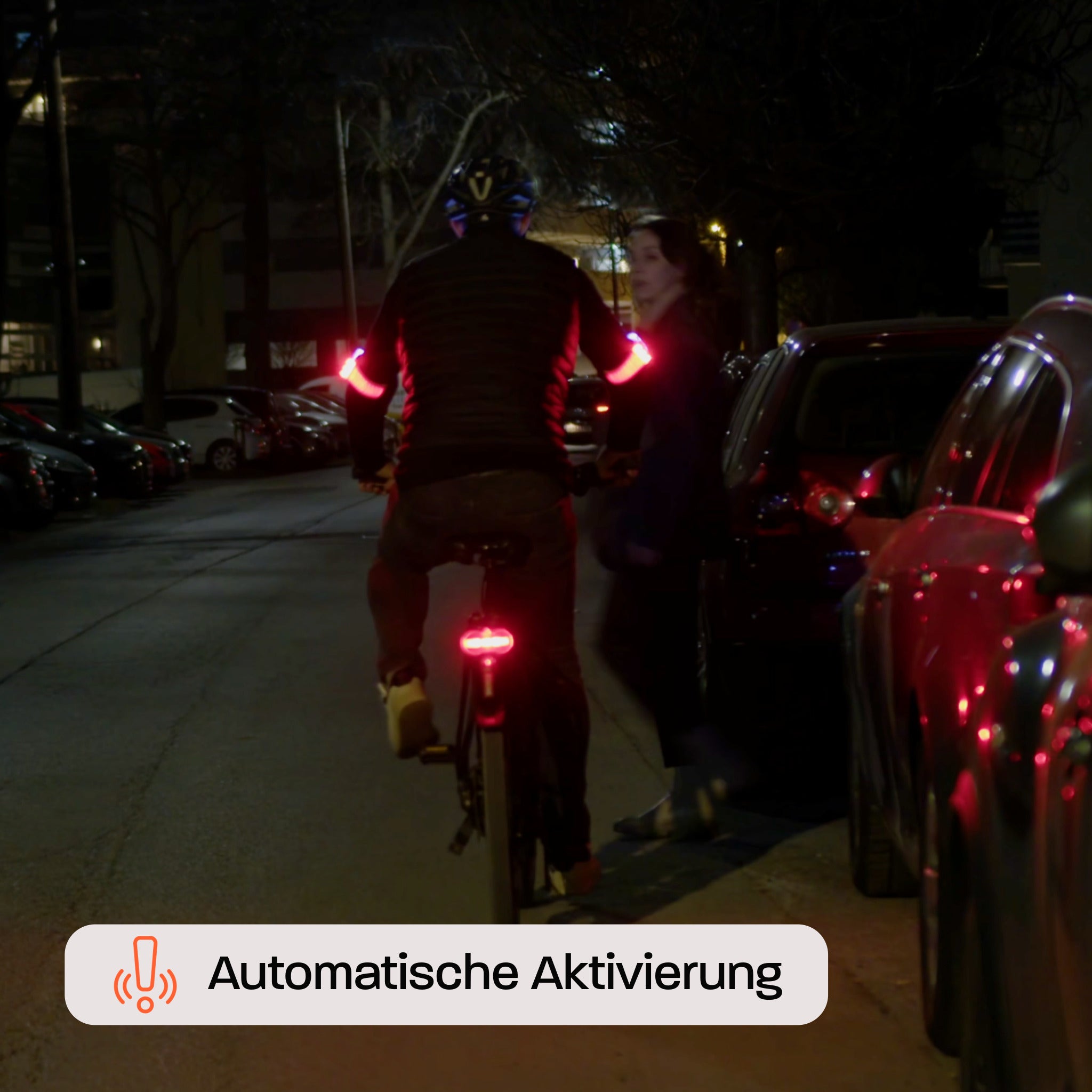

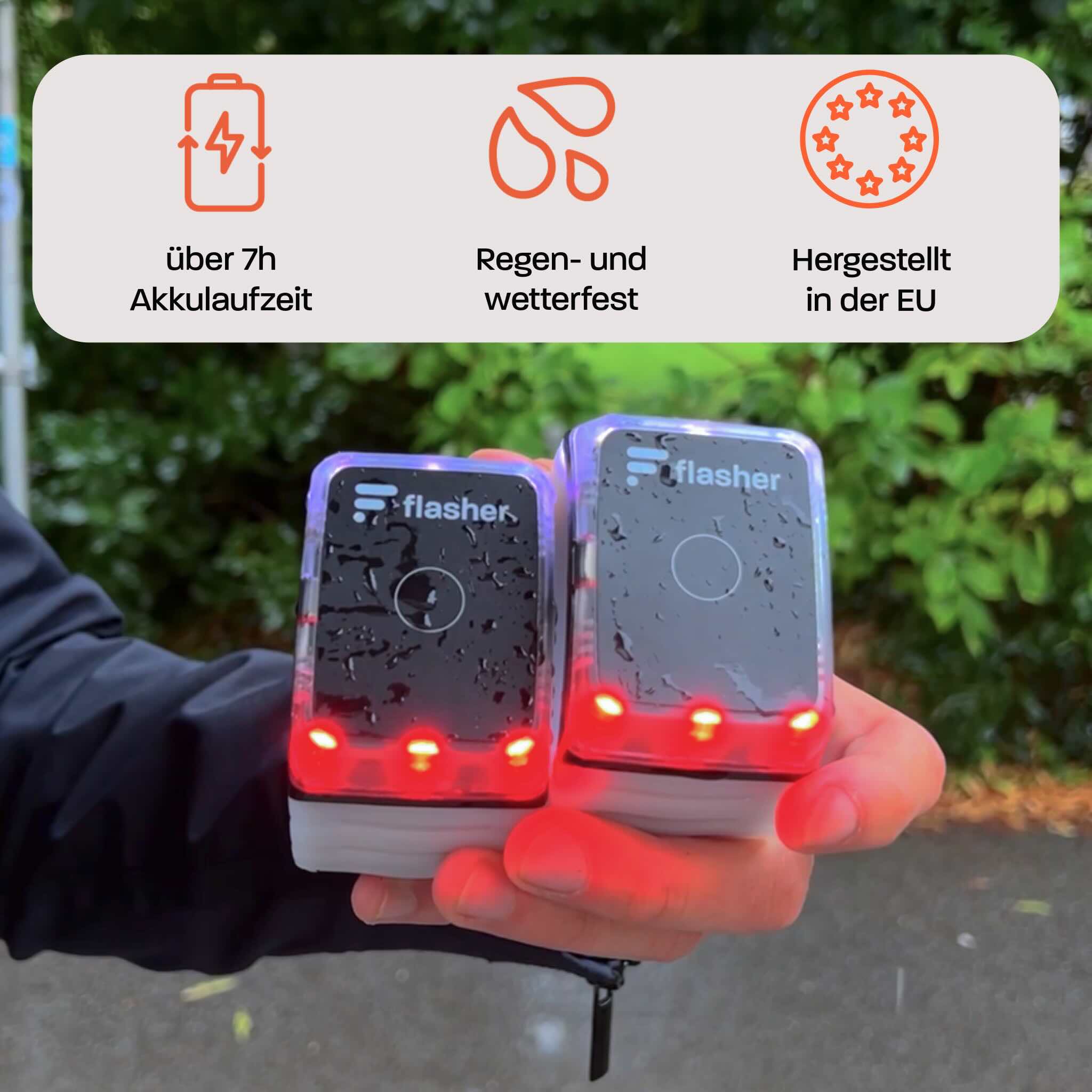
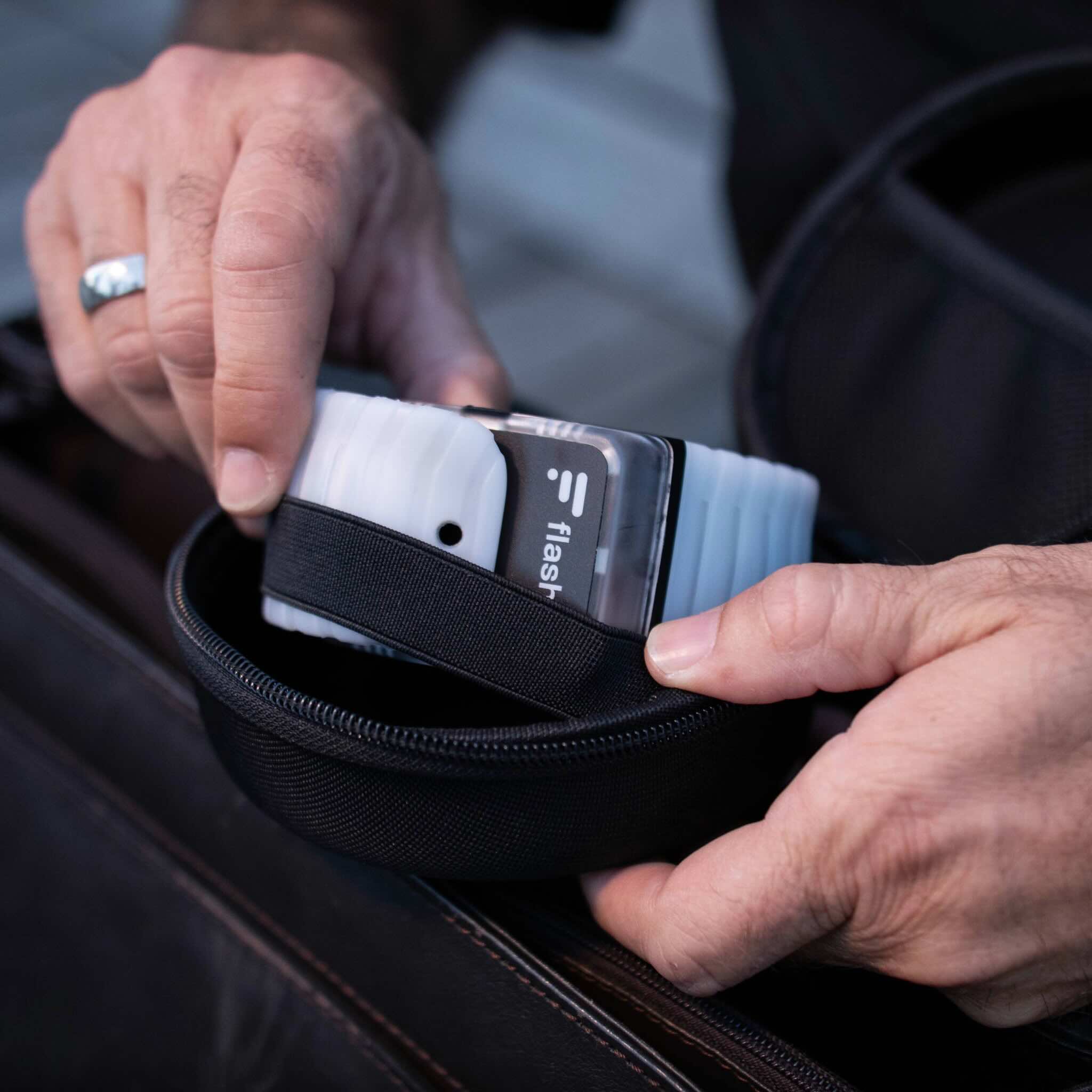
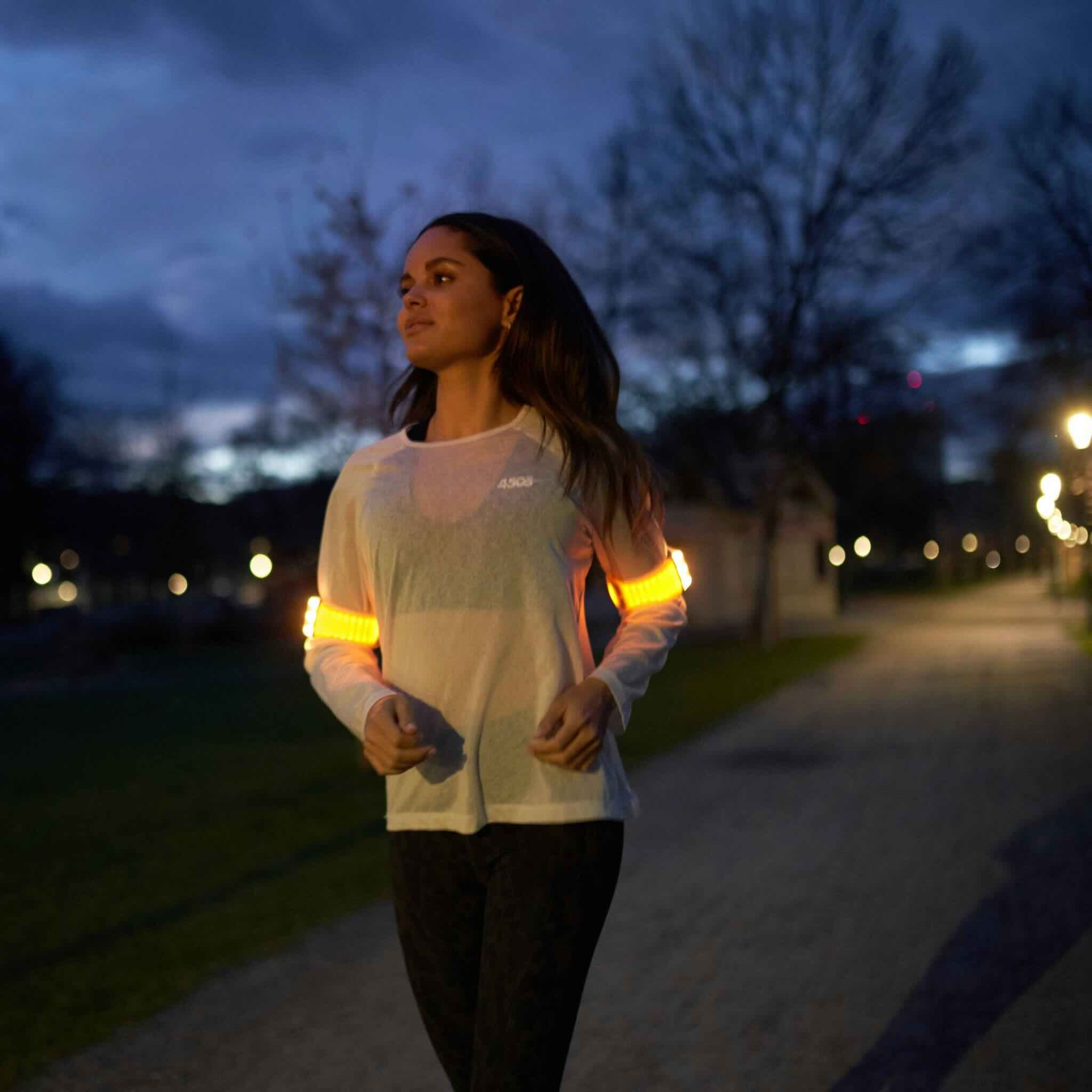
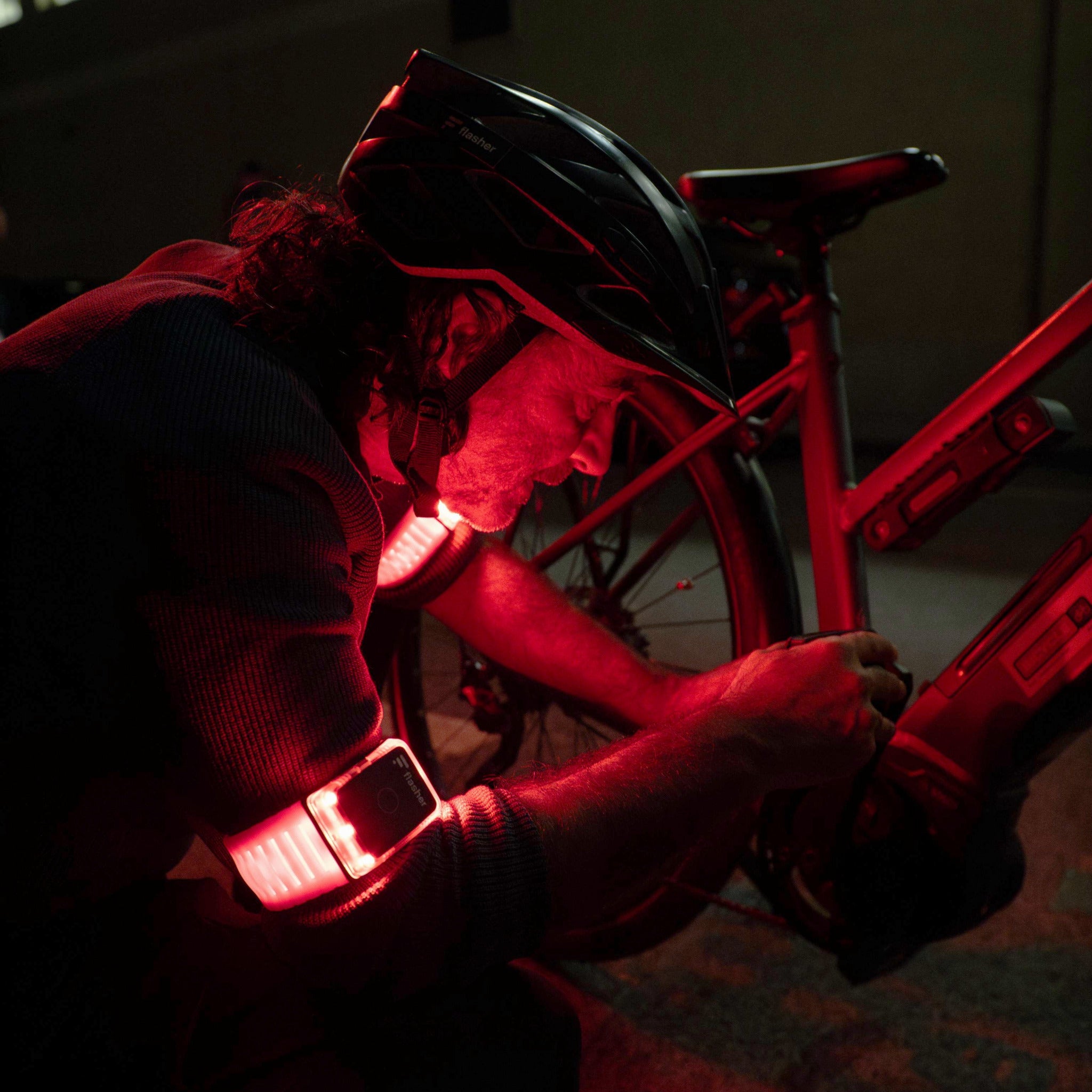
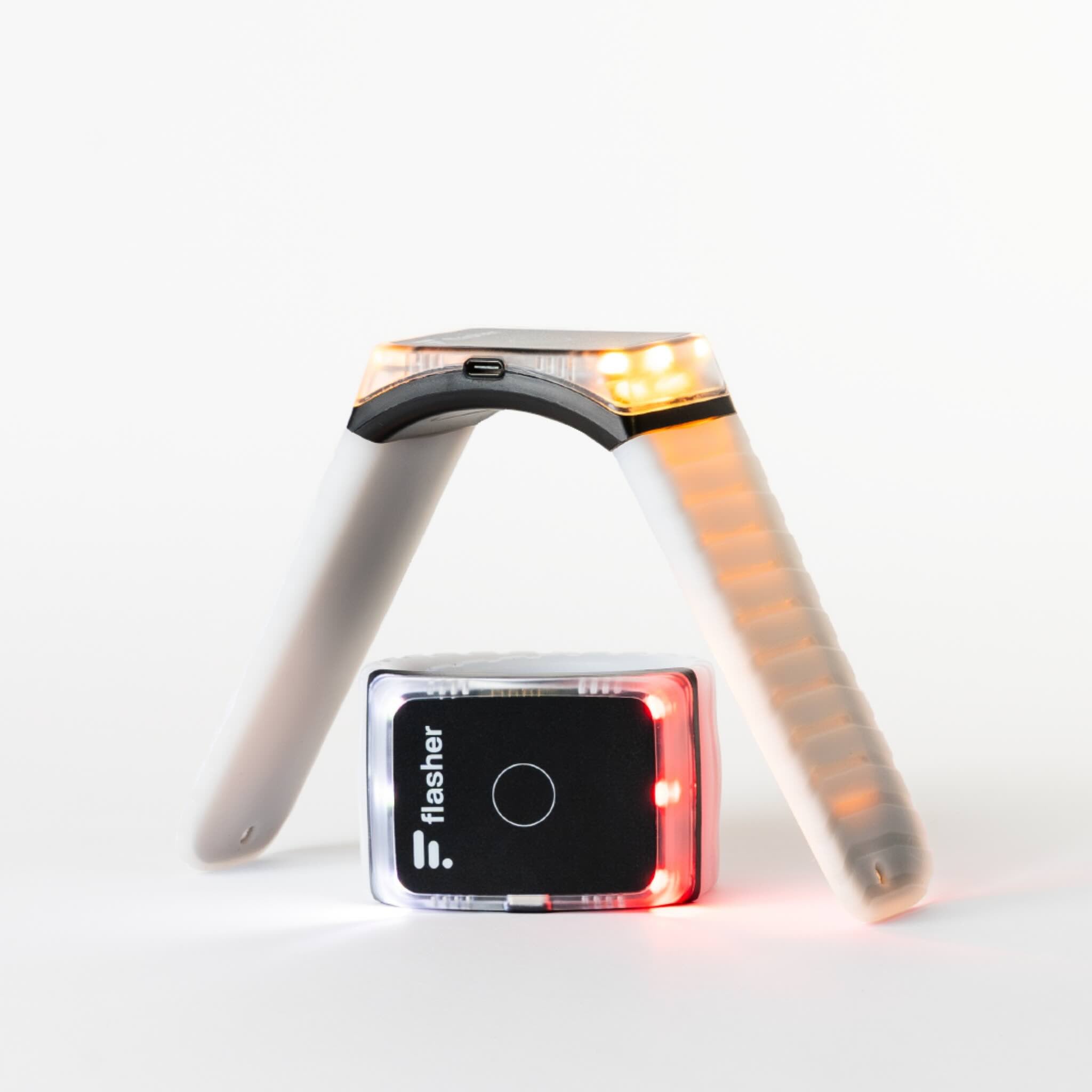
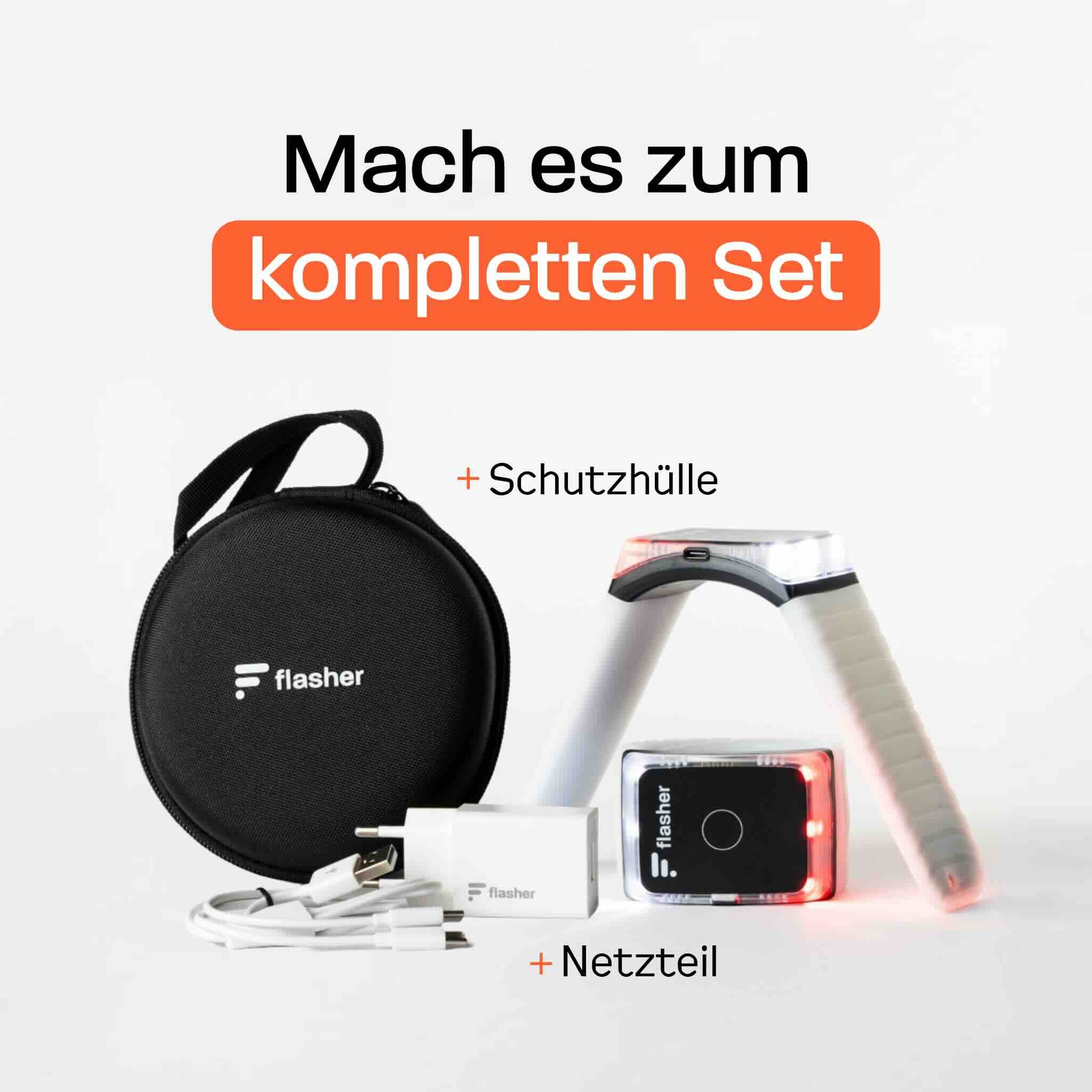
Flasher Duo
The smartest bicycle and e-scooter lights in the world:
- Gesture control turn signal indicators
- 4 modes with ultra-bright 360° LEDs
- Automatic emergency brake lights
- Compliant with road regulations & water-resistant
- Additional features via Flasher app [optional]


